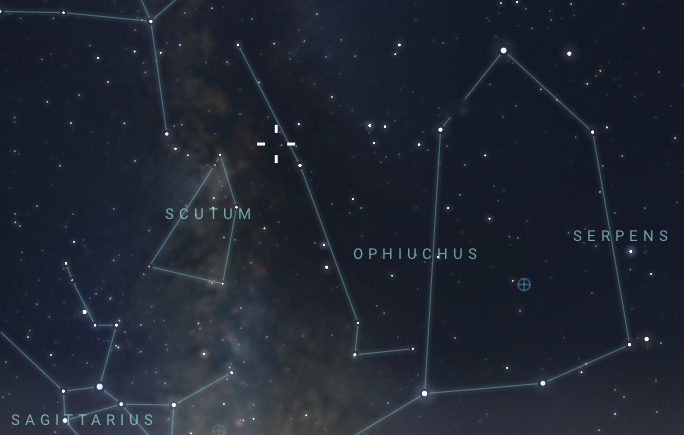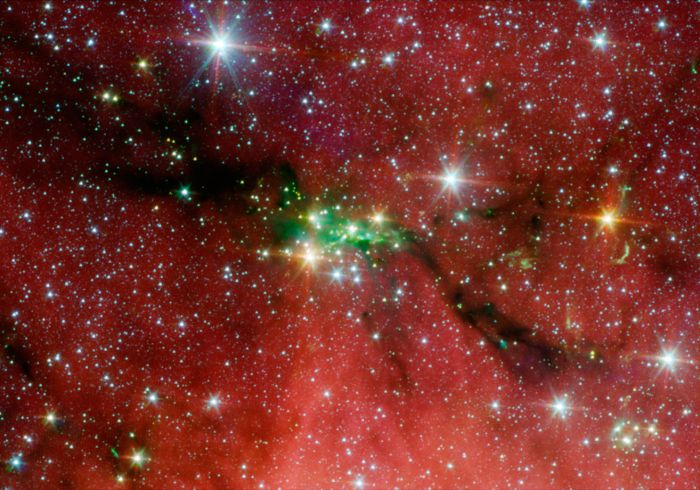The Serpens South Cluster, also known as Serpens OB2, is a young and massive stellar association located in the southern part of the constellation Serpens, specifically within Serpens Cauda. Positioned approximately 1,500 light-years from Earth, it serves as an accessible target for astronomical observation.
Composition
The Serpens South Cluster boasts a rich population of massive, hot, and luminous stars, primarily composed of O-type and B-type stars. These stars are relatively young, with ages estimated to be just a few million years. O-type stars, characterized by surface temperatures exceeding 30,000 K, are the hottest stars in the universe. Due to their high mass, they have short lifespans, typically ranging from a few million to about 10 million years, culminating in dramatic supernova explosions. In contrast, B-type stars have surface temperatures between 10,000 K and 30,000 K and exhibit longer lifespans, generally spanning from 10 million to a few hundred million years.
The intense heat and luminosity of both O-type and B-type stars make them pivotal players in the processes of star formation and stellar evolution. They significantly influence the evolution of galaxies and the interstellar medium. Their intense radiation can affect the formation of nearby stars, while their eventual deaths enrich the surrounding space with heavy elements, fostering the creation of new stars and planets.
Additionally, the Serpens South Cluster is part of the larger Serpens Molecular Cloud, an active region of star formation that includes a variety of other stellar groups and protostars. This association contributes to our understanding of the complex dynamics involved in star formation and the evolution of stellar clusters.
Research
The Serpens South Cluster has attracted considerable attention from astronomers conducting observational studies to better understand its stellar population and dynamics. Research in various wavelengths—ranging from optical to infrared and radio—has provided valuable insights into the properties of the stars and their interactions with the surrounding environment. This cluster serves as an excellent laboratory for studying the processes involved in the formation and early evolution of stars, shedding light on the dynamics of stellar clusters.
Observation
The Serpens South Cluster lies within the Serpens constellation but is also positioned near the borders with Ophiuchus and Scutum. The Serpens South Cluster can be seen from both hemispheres during late spring and summer from April to August. During this period, the constellation Serpens is well-positioned in the night sky, making it easier for observers to locate the cluster. While it can be observed with standard 10×50 binoculars, the view may be faint. Larger binoculars with good light-gathering power can enhance the overall view, allowing observers to appreciate its general shape and structure. To fully resolve individual stars and experience the cluster’s beauty, a telescope is recommended. A moderate to large telescope, especially with an aperture of 4 inches or more, will provide a detailed view of the Serpens South Cluster, allowing observers to discern individual stars and possibly detect subtle features, making it a rewarding experience for those exploring the night sky.




